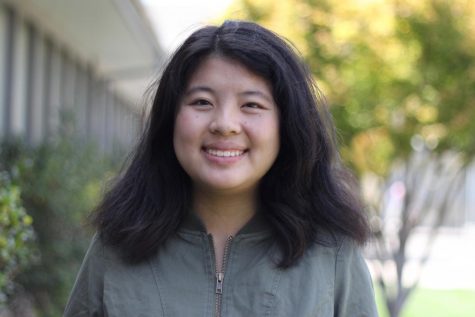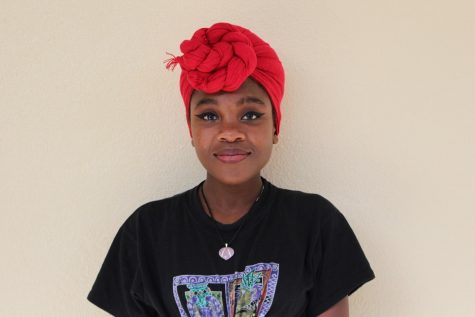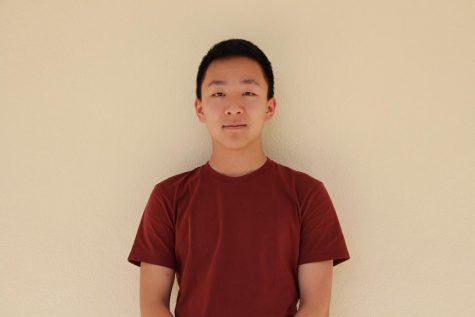Language Learning
December 11, 2017
Audrey Leong
Audrey Leong’s family communicates in four different languages: French, Cantonese, English and German. When her mom walks into the room, Audrey begins to speak French, switching just as quickly to Cantonese when her dad comes in and mixing French and English to speak to her brothers. The multilingual family has become accustomed to abruptly changing languages to communicate with one another, even adding in German phrases from a year spent living in Germany.
“The moment my mom comes in the room it’s French for sure, and if I need to talk to my dad I switch to Cantonese,” Audrey said. “We end up having a mix of French and Cantonese, and then we have a mix of French and English. There are some terms from different languages that we know that we specifically use, like whenever we say that we’re cold, we’ll use the German word for cold even if we’re speaking in French.”
Audrey’s proficiency in languages — she speaks French, Cantonese, English, Swedish, Korean, German and Latin — began out of necessity, since both her parents are bilingual, and she needed to learn German during her family’s year abroad. However, the influence of her German teacher and the realization that language learning came naturally to her created a passion for languages that has resulted in her role as a teacher at her German school.
“I had an awesome teacher and she knew seven languages, and she became my personal teacher when it came to German,” Audrey said. “She started bringing in Latin terms and ancient Greek terms that she’d studied before, and [she told me I] should keep learning it. Because [I was] fully immersed in the culture and the language and everything, I ended up learning German in about six months. You tend to like something better when you’re good at it.”
At her German school, South Bay Deutscher Schulverien (German Language school of the San Francisco South Bay) Audrey takes students through a series of units, giving tests on a variety of subjects, including color names, farm animals and clothing. This year, she transferred from teaching students that already knew German to students who had no prior experience.
“I’ve transferred to this new class, [so] there are a lot of students that are of Asian backgrounds or of Indian backgrounds because their parents thought [knowing German] was a good skill to have,” Audrey said. “[Because I’m teaching the class as a non-native speaker,] they think it’s actually possible [for their] child [to] also reach that level of fluency.”
However, while many parents are encouraged by her fluency in German, others are concerned that she is a non-native speaker. Some parents have mistaken her as a student rather than a teacher at her school, even in second grade classes.
“With [some] German parents, I get where their worries are coming from, and I get that I’m not a native speaker, but I have the qualifications to teach [their children] first and second grade material at the very least,” Audrey said. “It’s slightly annoying, I know they can’t really help it and that it’s not normal, but they don’t need to come up to me and ask me [if I’m] a student in the second grader class. I’m a teacher.”
As a freshman, Audrey assisted other students with their learning and motivated her classmates to speak in her AP French class, encouraging others with her fluency in the language.
“She was always engaged in conversation with other students in the classroom so she was motivating other students to speak,” French teacher Christophe Barquissau said. “She would [ask] questions constantly. That makes a big difference.”
For Audrey, a main motivation in learning languages has been the ability to learn more about a culture. She believes that learning more about how people in other countries think is essential to mastering any language, and her exposure to different languages has made her more accepting of cultural differences.
“I’ll get interested in a certain culture and how their words think, because culture is embedded into languages,” Audrey said. “Once you’re aware of how a culture thinks and how they work, it’s a lot easier to be accepting of different cultures and to be curious about other cultures. It’s important to be accepting of new people coming in regardless of what they think [or] what they believe.”
Karina Halevy
For junior Karina Halevy, language is quantifiable. As the founder of LingHacks, Karina recently hosted the Bay’s first-ever computational linguistics conference for high schoolers, where she taught other students to combine language, computer science and math to make sense of the messy and dynamic patterns that make up human speech.
But Karina’s journey began with her love for language itself, before she ever learned about what she could do with it.
Growing up in a trilingual household, Karina is fluent in English, Chinese and Hebrew. Through taking classes at school, she has become fluent in Spanish as well. Karina even learned languages at her ballet studio. From hearing her instructor speak Russian, Karina noticed familiar patterns in syntactic structure, piecing together the meaning of phrases solely through context.
“The strategy I use the most is just contextual learning, which is the way I learned Russian,” Karina said. “My teacher was speaking Russian to others and I just put two and two together. Hebrew and Russian share a bunch of cognates that I discovered at ballet. Our gym coach was telling us to do something and I was like, ‘Hey, that was the same word in Hebrew.’”
Karina is now teaching herself to speak Hindi, Urdu, Italian and Indonesian. Although Hindi and Urdu have been more difficult to learn since she hasn’t had experience with any similar languages, Karina embraces the challenge, intrigued that language—at its core—is algorithmic, filled with patterns and grammatical rules.
“I just enjoy taking apart syntactical structures and parsing different languages, and it also has kind of a mathematical field to it,” Karina said. “I love all things algorithmic, so it’s kind of artful and elegant.”
This analytical view of language combined perfectly with Karina’s affinity for math, as she began to apply math to language through artificial intelligence. During the summer after ninth grade, Karina attended a Stanford Artificial Intelligence summer camp called SAILORS, in which she learned to apply mathematics to parse language with computational linguistics.
“My two worlds [of math and language] came together when I attended [SAILORS] at Stanford, where I did a project on natural language processing,” Karina said. “I saw the computational linguistics aspects integrated and I found that super fascinating, so that was kind of my starting point in computational linguistics.”
At SAILORS, Karina developed an algorithm using natural language processing, a method to get a computer to understand the meaning of human words. Karina’s algorithm takes in tweets during natural disasters and labels them as either “food,” “water” or “medical” needs; this information is then used to supply resources to the people who need them.
“You take in a tweet and parse it into features, which is breaking it down word by word,” Karina said. “For each word, the algorithm says, ‘if this word exists in the tweet, then what’s the probability that the tweet will be about this category?’ You then [give] each probability [a weight] and spit out the most likely [category]. Within each of those [assigned] categories, [the algorithm] matches people who needed resources to people who could give them.”
Karina learned from this project that the implications of computational linguistics are far-reaching, so she began to share her passion to others, as both a polyglot and a student of mathematics. On November 18, Karina hosted LingCon, a computational linguistics conference that included interactive coding workshops, a lecture on conducting research similar to Karina’s SAILORS project and a panel session of industry experts from Google and Stanford.
“I thought I could put [computational linguistics and hackathons] together and engage an even broader audience through this intersection of the humanities and the sciences,” Karina said. “I’d say LingCon was a success. [Many attendees said that] the conference definitely gave more insight on what life could be like if [they] pursued computer science. Our feedback showed that students came out of LingCon 16 percent more likely to pursue a career in AI and 40 percent more likely to pursue a career in computational linguistics.”
Many attendees, including junior Anya Sharma, noted that LingCon introduced them to a specific area of computer science that they want to pursue in the future.
“Some of the lectures and workshops they talked a lot about machine learning, not just computational linguistics,” Anya said. “[The conference] taught me that machine learning is applicable to a ton of different fields. Before coming to LingCon I already wanted to pursue computer science, but afterward I realize that machine learning was a more specific interest that I want to explore.”
LingCon served as a “training day” for high school students to learn the skills needed to create a product at LingHacks, which is a 24-hour computational linguistics hackathon that Karina is now preparing to host in the spring.
“[At LingHacks], there’s going to be an extra focus on long-term potential rather than just having something ready to pitch,” Karina said. “We really want to have people think about how they can do research and use math and really dig into how their things work in the long term. My biggest project [currently] would be LingHacks, and I’m starting a research project next semester with an alumni program from the Stanford summer program.”



